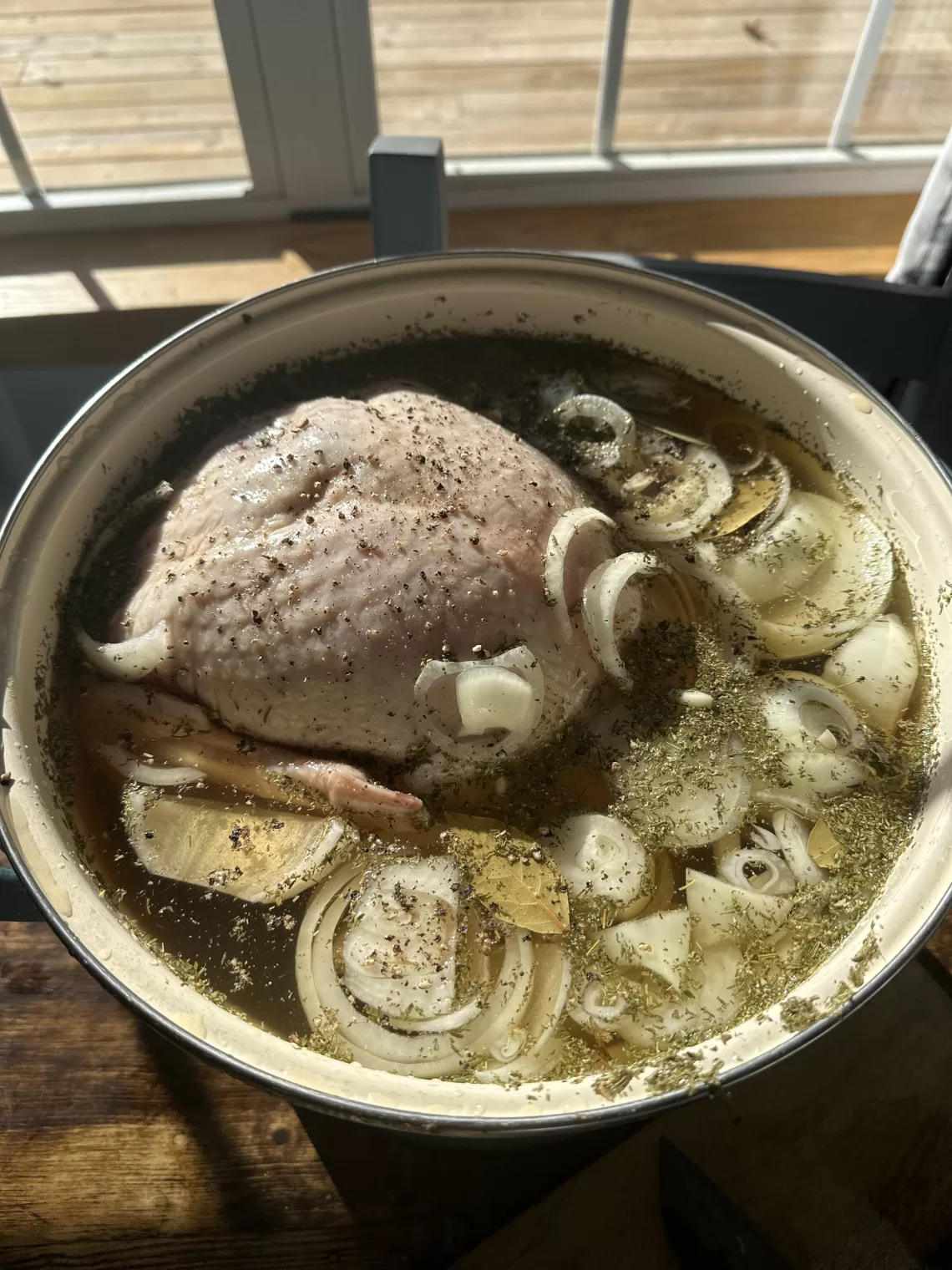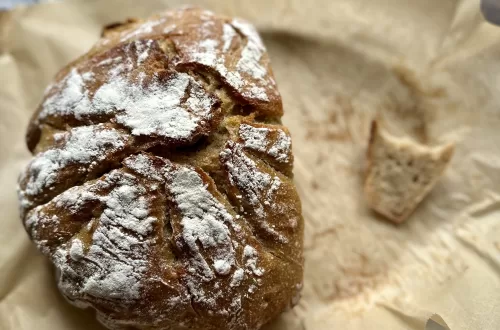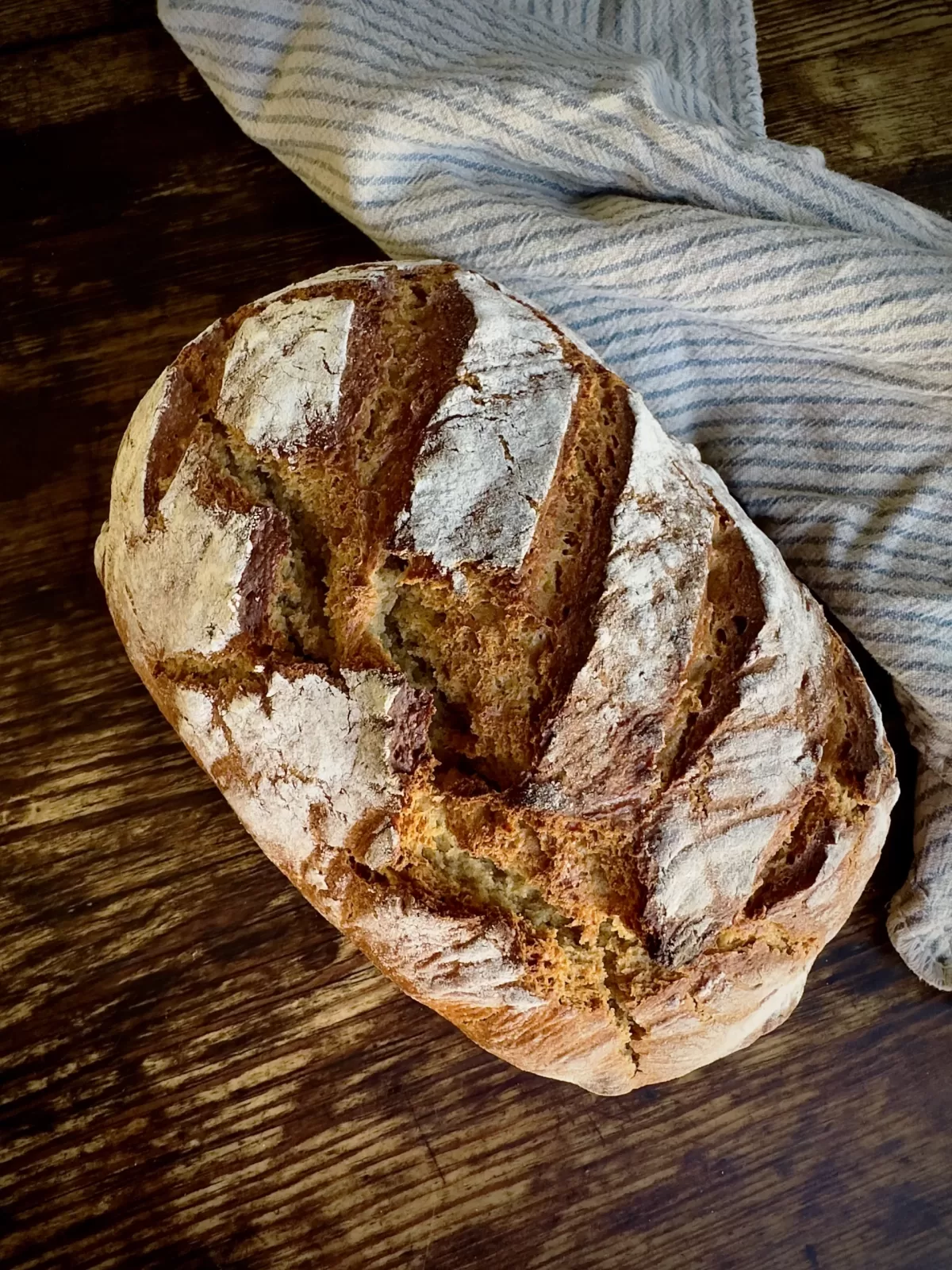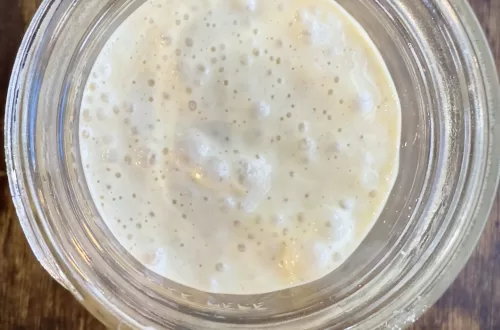Cooking the Thanksgiving Turkey was always my mom’s thing. Holiday traditions are a big deal around our family. So it felt like a big deal when the responsibility got passed down to me. I still haven’t taken on dressing–seems too sacrosanct. In reality, I modify the brine every year and the seasoning we mix into the mayo. So this isn’t an exact recipe as much as the big skeleton of how we smoke our Thanksgiving turkey. Check out the notes for a few of our favorite ways to mix things up. If you’re looking for a little help making meaningful traditions with your family, here’s our best suggestion.
Ingredients
- Big ol’ turkey–if your turkey comes with giblets, you can use them to make stock or gravy. This recipe doesn’t cover how to use giblets.
- 1 big jar of mayonnaise
- 1 small jar Cajun seasoning (or other seasoning of your choice)
- Brine (see notes)
- Everything your smoker needs (including roasting pan) to cook a turkey for 12 hours
Steps
- Thaw the turkey in the refrigerator. If you are thawing in the refrigerator, it takes about 24 hours for every 5 lbs of turkey. We usually have 10-15 pounder so we start on Monday.
- On Wednesday morning, brine the turkey by putting the turkey in a large pot covered in room-temperature or cooler brine. See my notes below on how I pick my brine.
- Prepare the mayo slather. We like cajun seasoned turkey so we mix a small jar of cajun seasoning with a large jar of mayonnaise.
- Prepare the turkey for smoking. Slather the turkey (inside and out) with cajun-seasoned mayonnaise.
- Smoke the turkey. It takes 30-40 minutes per pound of turkey. Something always goes wrong at this stage so I budget 40 minutes at 225-250.
- Check the turkey after 3.5 hours. The turkey needs to get from 40-140 degrees in four hours or less according to Butterball’s technical guide for smoking turkey. If your turkey is lower than this after 3.5 hours, you need to stick it in the oven (here’s a good food safety run down for smoking turkey). Keep cooking until the temperature is right for the part of the turkey you stick the thermometer. Generally speaking, cook to an internal temperature of 165. But the temperature it should cook to might change based on the part of the turkey you stick the thermometer. (See Butterball’s full description by body part here).
- Let the turkey sit. Cover the turkey in foil and let it sit for 30 minutes for a more flavorful, juicy turkey.
Notes
- Most recipes I have seen either call for the turkey to be brined OR mayo-roasted. We do both. They both add a level of tenderness and flavor to the finished product. You can omit one of these steps if you would like to do so. But we like to use them both.
- I have done a simple brine in a 1:1 solution of apple cider vinegar and water. Every year I’m told by someone that it’s too much apple cider vinegar, and every year it turns out just fine. It’s possible that since we used pasture-raised turkey, ours can take a little extra vinegar. I don’t know. Feel free to experiment with less. I have also created more complex brines like the one from Jessie Griffiths The Turkey Book. If perfecting your Thanksgiving turkey is a hobby, go complex. If you’re trying to stay above water on Thanksgiving week, but want a little flavor, just go apple cider vinegar and water. It’ll be good either way.
- For a more traditional flavor, you can add traditional herbs and lemon juice to the mayo.






I have recently started a site, the info you provide on this site has helped me greatly. Thanks for all of your time & work.